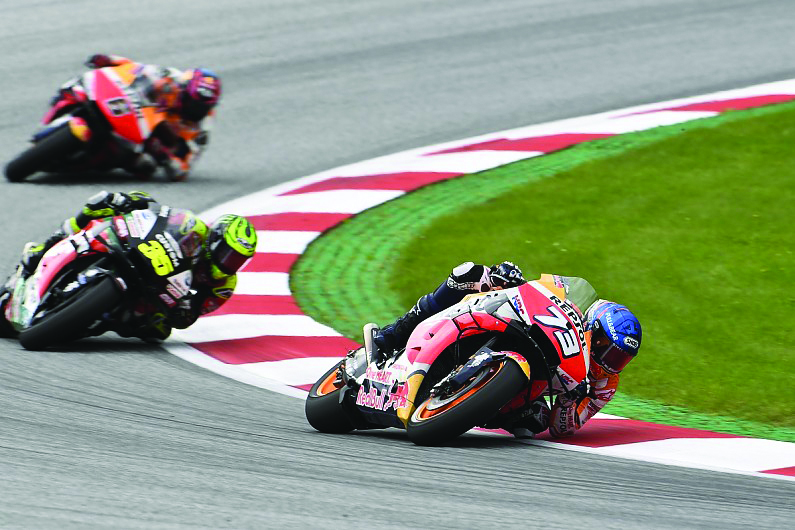Simply put, in the world of motorsport, Grand Prix motorcycles are purpose-built racing machines that are unable to be ridden legally on public roads as opposed to various production-based categories of racing, such as the Superbike World Championship and the Isle of Man TT Races that feature modified versions of road-going motorcycles available to the public.
Either way, racing at over 350km/h on a 1,000cc liquid-cooled V4 Grand Prix bike, millimetres off the ground with just a leather suit and helmet for protection may not be everyone’s cup of tea but for the fearless athletes that take to the grid at MotoGP meetings, it’s just another day in the office.
MotoGP, as we know it today, began as recently as 2002 but its roots go back the FIM (Fédération Internationale de Motocyclisme) Road Racing World Championship Grand Prix of 1949. Five separate categories competed (125cc, 250cc, 350cc, 500cc and sidecars) at that GP held at the infamous Isle of Man TT, however, it was British motorcycle road racer Harold Daniell that took out the 500cc (now MotoGP) category.
Through the 50s and start of the 60s, the GP racing championship spread across Europe with events in countries such as Switzerland, Holland and Belgium and on circuits such as Spa-Francorchamps and Monza, until 1961, when Argentina became the first venue outside of Europe to host the series. Japan then followed in ‘63 and North America in ‘64, but not all venues survived.
Often called ‘one of the most dangerous events in the world’ or ‘38 miles of terror’ TT races at the Isle of Man have, since their inception to date, claimed 260 lives so it would have come as little shock when the location was boycotted by competitors in the early 70s and then removed from the MotoGP calendar in 1976.
GP Icon Barry Sheene said “I vowed I would do everything I could to stop the Isle of Man counting towards the world championship. And it was stopped, so they love me in the Isle of Man. I thought, this is not racing, it’s a suicide mission.”
Motorcycle brand names such as Norton, Honda, Suzuki, Yamaha and Ducati have all featured in the event but the most successful rider in Grand Prix history is Giacomo Agostini with 15 titles (8 of which in the top flight series) and 122 race wins. Alas, a New Zealander never won the world 500cc Road Racing Championship although four, Ginger Molloy (1970) Keith Turner (1971) Kim Newcombe (1973) and Graeme Crosby (1982) have finished in the runner-up position.
In 2002, the premier class was rebranded MotoGP. 500 cc two-strokes began being phased out as manufacturers were to choose between running two-stroke engines up to 500 cc or four-strokes up to 990 cc or less (nowadays this has increased to 1,000 cc)
Currently, the Championship is divided into four classes, Moto Grand Prix, Moto2, Moto3 and MotoE. The first three classes use four-stroke engines, while the MotoE class uses electric motorcycles. The season comprises of 19 Grands Prix, with 12 held in Europe, three in Asia, two in the Americas and one each in Australia and the Middle East and the starting grid is composed of three columns, so approximately 20 riders. Grid positions are decided in descending order of qualifying speed, with the fastest on the pole or first position. Races last approximately 45 minutes, each race is a full-on sprint from start to finish without pitting for fuel or tires.
MotoGP is a thrilling, adrenaline-filled motorsport event that despite ‘evolving’ over the past seven decades is still fraught with danger. Unfortunately, it remains without a Kiwi winner, however, it’s worth noting that Motorcycle sport has brought New Zealand 22 World Championships, which is more than any other sport, so watch this space.

